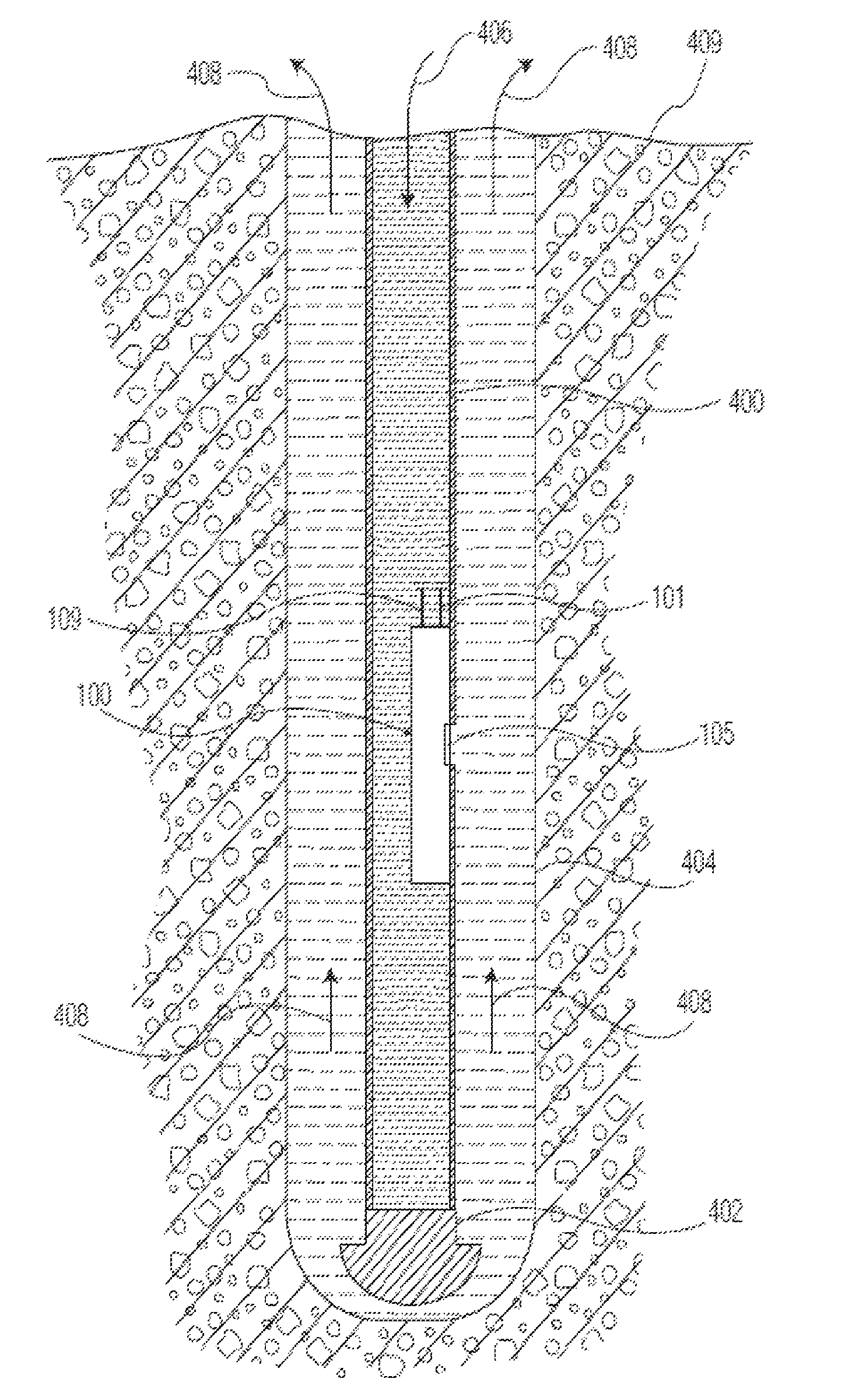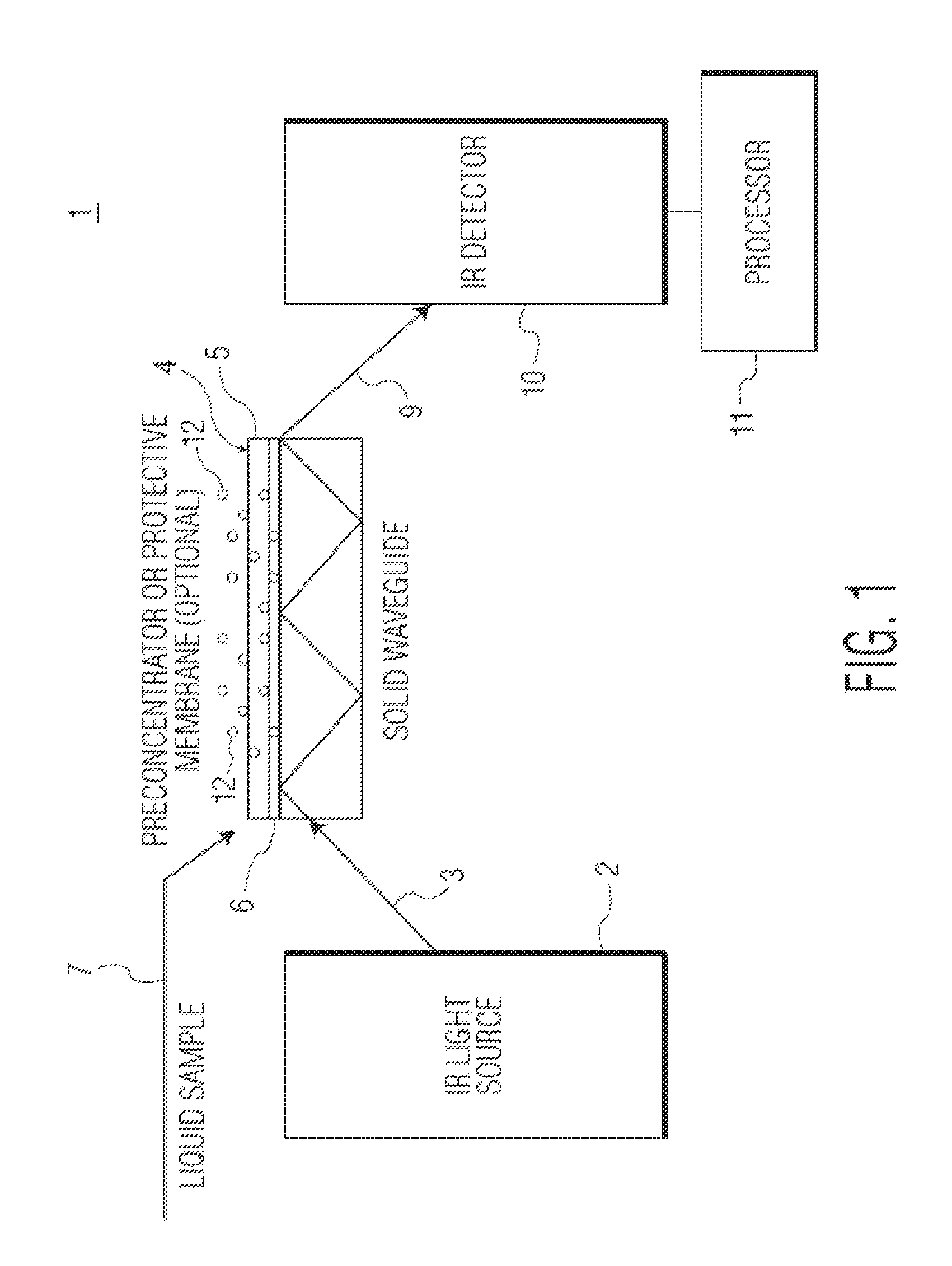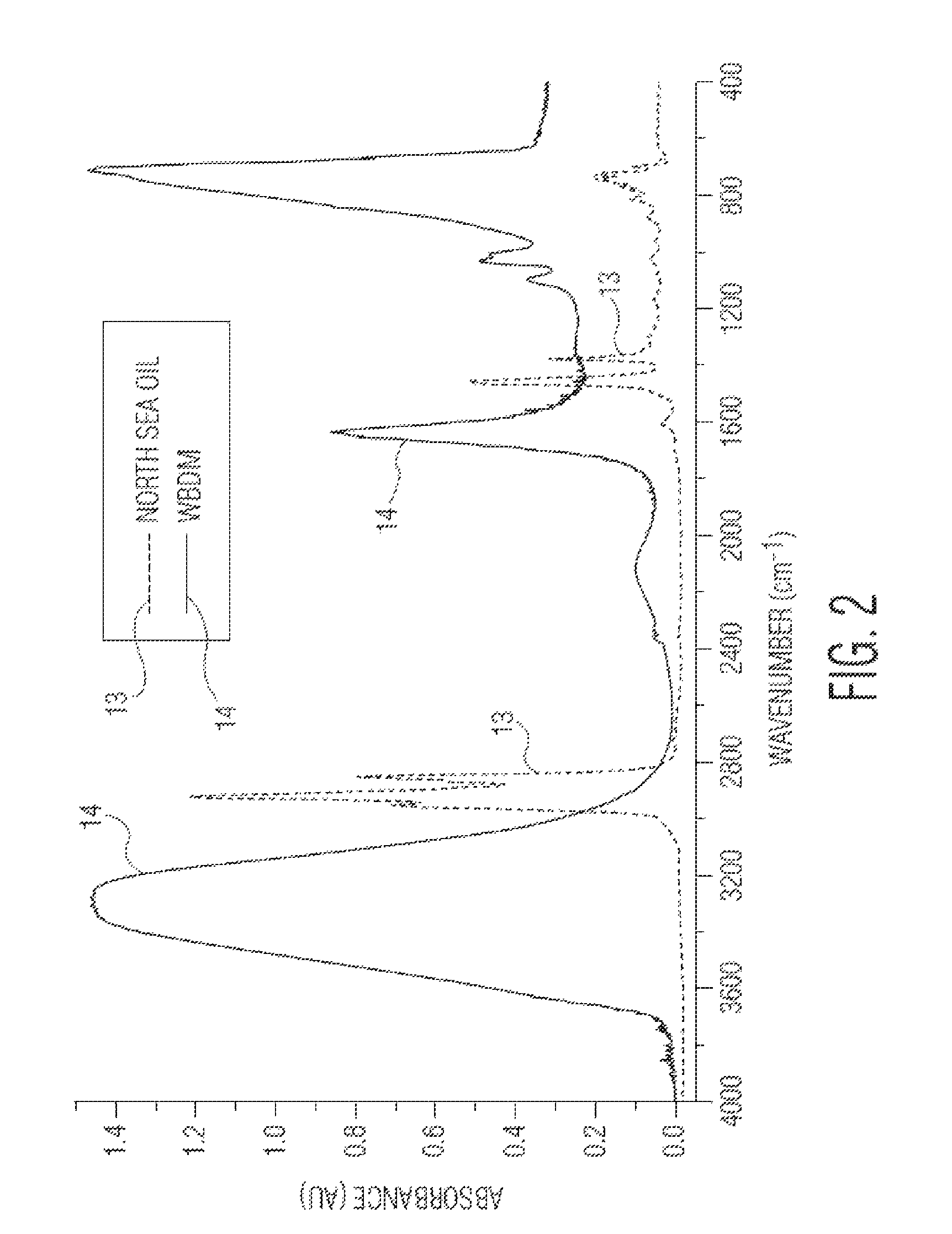Method and apparatus for a mid-infrared (MIR) system for real time detection of petroleum in colloidal suspensions of sediments and drilling muds during drilling operations, logging and production operations
a technology of infrared and real-time detection, applied in the direction of optical radiation measurement, instruments, spectrometry/spectrophotometry/monochromators, etc., can solve the problem of limited hydrocarbon detection while drilling
- Summary
- Abstract
- Description
- Claims
- Application Information
AI Technical Summary
Benefits of technology
Problems solved by technology
Method used
Image
Examples
Embodiment Construction
[0037]The present inventors recognize that there is a pressing need to improve systems for determining the presence of trace or minor quantities of oil in aqueous systems or water in oil systems throughout petroleum upstream and downstream operations. Such systems require sampling and analysis to be taken under hazardous or extreme environmental conditions. For example, analysis down a well bore requires a robust analyzer system about 4-6″ in diameter and several feet in length capable of operating at depths of up to ˜20,000 feet, temperatures of in excess of ˜200° C., and pressures of greater than ˜20,000 psi, and in the presence of acidic gases (CO2 and H2S) and high salinity. Determination of the presence of and quantification of CO2, C1-C4+ hydrocarbons, Gas / Oil Ratio, and aromatic hydrocarbons such as benzene, toluene, and xylenes in a downhole fluid, allows one to determine the in situ composition at depth, and thereby the depth of “payzones” of interest. Potential application...
PUM
 Login to View More
Login to View More Abstract
Description
Claims
Application Information
 Login to View More
Login to View More - R&D
- Intellectual Property
- Life Sciences
- Materials
- Tech Scout
- Unparalleled Data Quality
- Higher Quality Content
- 60% Fewer Hallucinations
Browse by: Latest US Patents, China's latest patents, Technical Efficacy Thesaurus, Application Domain, Technology Topic, Popular Technical Reports.
© 2025 PatSnap. All rights reserved.Legal|Privacy policy|Modern Slavery Act Transparency Statement|Sitemap|About US| Contact US: help@patsnap.com



